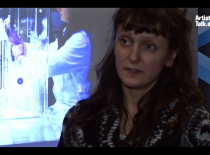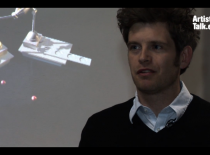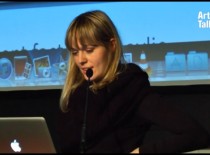Prague - December 8, 2012
Maria Joao Grade Godinho presents her paper within the panel Extreme Metabolic Interactions: Cooking for Apocalypse at International conference Mutamorphosis in Prague, Czech Republic.
Science is a powerful enterprise in contemporary world. The influence of science in western culture is strong, with its developments shaping society and its language permeating social vernacular. Take as example the term mutation, which according to the Oxford English Dictionary comes from the Latin mutare meaning ‘to change’. It is frequently associated with the scientific notion of a structural change on a gene which results in an alteration to its form, potentially capable of causing disease or generating an aberration. Other scientific views of ‘mutations’ are less dramatic: in evolutionary studies they are understood as sources of variation, itself a fundamental characteristic of a population upon which selection can occur. These two scientific uses of the word ‘mutation’ illustrate the heterogeneity of science, with multiple disciplines engaged in their own research but simultaneously liaising and interacting in a complex web of relationships and intersecting practices. Mutations can be understood as being ‘boundary objects’. This is an analytical concept proposed by Star and Griesemer (1989), referring to abstract or concrete things “which are plastic enough to adapt to local needs and the constraints of the several parties employing them, yet robust enough to maintain a common identity across sites” (p.393). They act as common currency between different practitioners of science, allowing meaningful exchanges between them and thereby contributing to the making of science. I propose to extend the concept of boundary objects to include biological art work. The burgeoning field of biological art (Coakley, 2011), often brings together scientists and artists to create interdisciplinary works that go beyond iconography and are done utilizing biological materials, besides being inspired by biotechnological themes and developed using scientific techniques – it encompasses a variety of fields and methods, including “subverting the visualization technologies of molecular biology in ways not foreseen in the user’s manuals” (Hauser, 2005). The bio-artist can therefore be seen as a hacker. The artwork, with a different conceptualization from scientific work, appears like a mutation in the scientific landscape.
Methodology: The analytical view of biological art works as boundary objects is not inconsequential. For it requires an attempt at categorizing them not just as artistic but also as scientific objects, which involves seeking the meaning they elicit in both of these cultures (Jones and Galison, 1998). I focus my attention on their understanding as scientific objects. Historically these have been seen by philosophers and sociologists of science either as “discoveries, unexplored territory waiting to be mapped” by realists or as “inventions, forged in specific historical contexts and molded by local circumstances” by constructivists (Daston, 2000,p.3-4). As boundary objects biological artworks will have to convey new knowledge to science, to impart innovative ways of understanding the scientific landscape. As a consequence one accepts that they expand the horizons of science, that they induce a change – science becomes mutated and accordingly art emerges as a mutagenic force. The proposed task, of viewing artworks as boundary objects, is an exciting challenge and offers a fertile ground for imaginative explorations.
- Tags:




 Copyright © 2025 ARTISTTALK. All Rights Reserved.
Copyright © 2025 ARTISTTALK. All Rights Reserved.
0 Comments
You can be the first one to leave a comment.